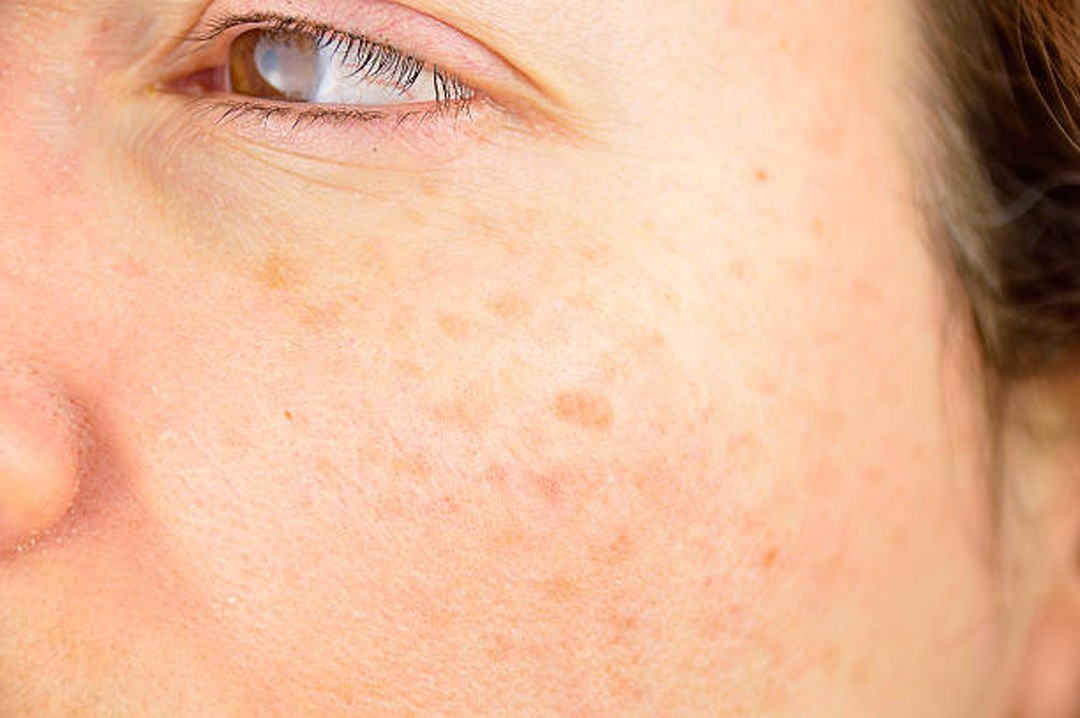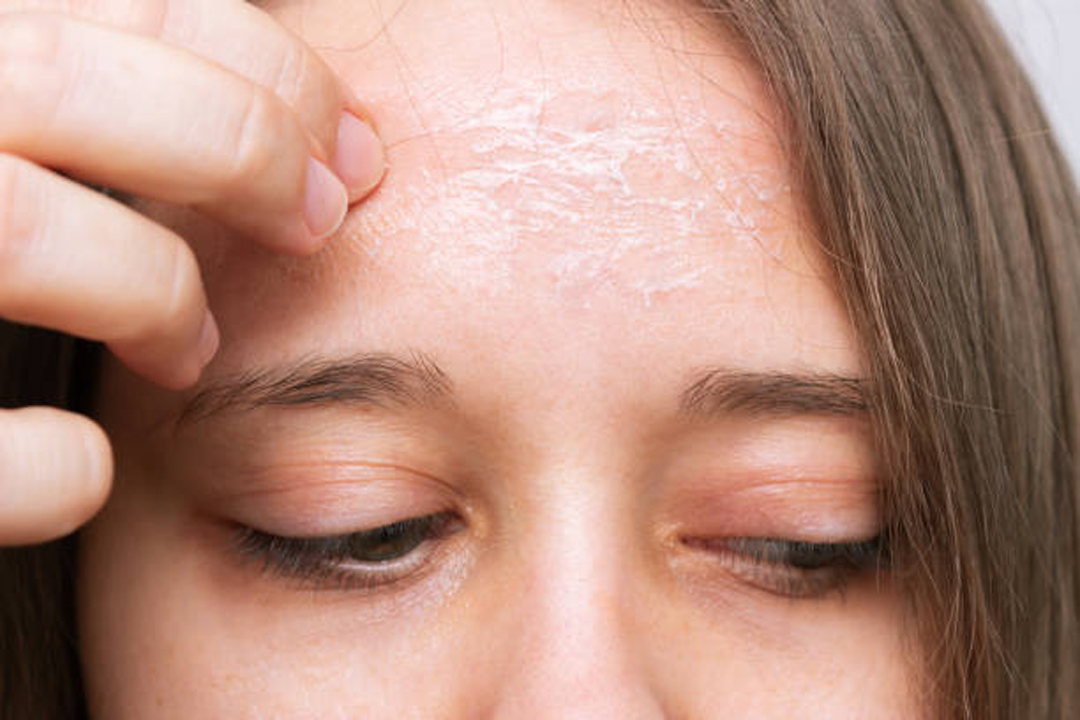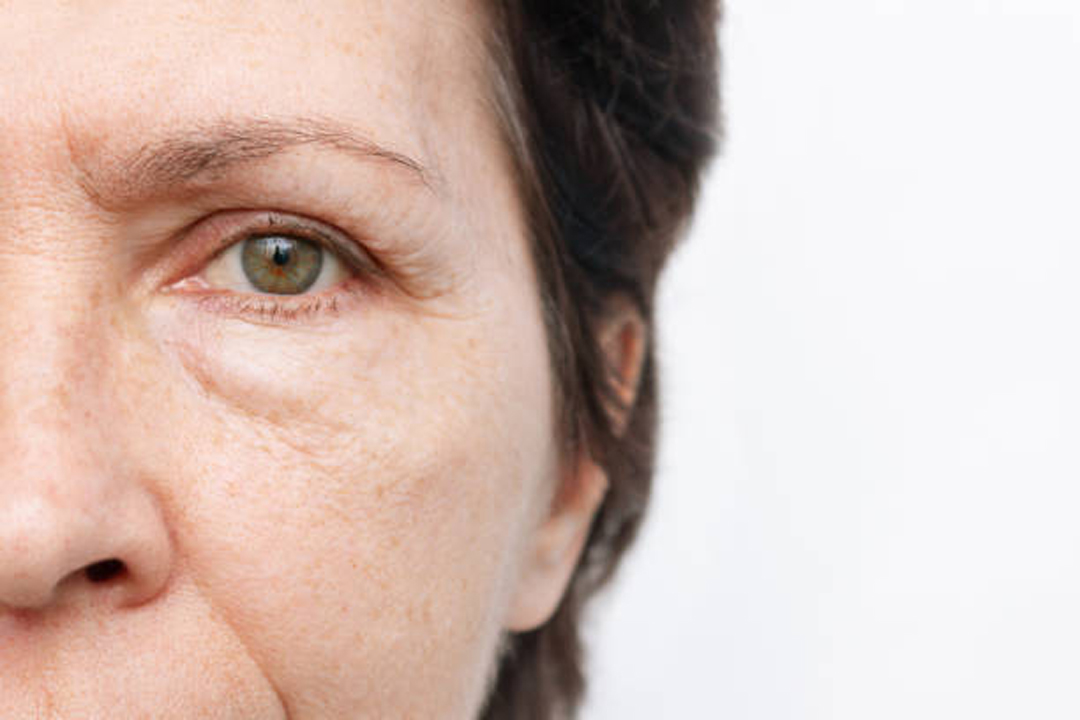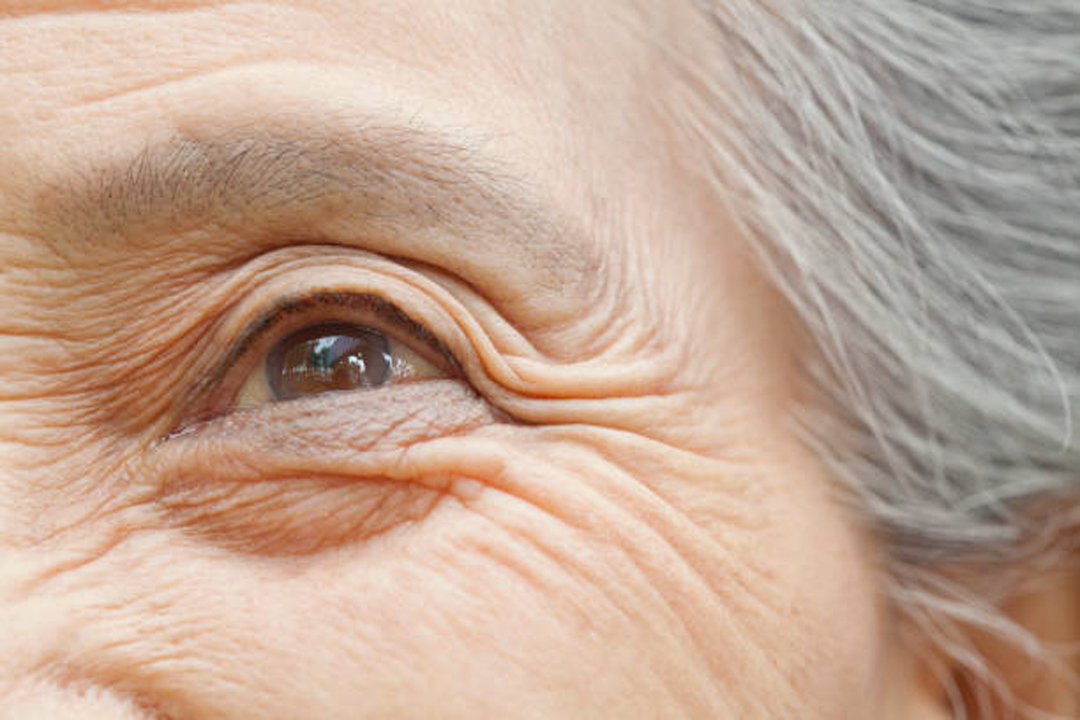Age deserves respect. Wrinkles are meaningful signs of a lifetime’s worth of lessons learned, of wisdom earned. So how come nobody wants them?
The great American obsession with youth may be lessening these days. Many of us are becoming more comfortable with the fact that getting older doesn’t necessarily mean we have to sit around senior citizens’ homes, reminiscing and watching TV. Scientists talk of the difference between “actual” age and “functional” age. It’s entirely possible to feel 35 when you’re actually 50. Seen in that perspective, chronological age is less important than it used to be.
Still, it’s nice to think that our outsides communicate how good we feel inside. Taking care of your skin the natural way can get that message out
Skin Care from A to Z
What’s the fundamental rule of natural skin care? Stop punishing your skin by exposing it to the things that cause aging. Here’s a list of skin’s most important enemies and how to avoid them, courtesy of Gloria Graham, M.D., a dermatologist in Morehead City, North Carolina.
- Avoid direct exposure to sunlight whenever possible. By one estimate, at least 80 percent of all visible skin aging results from a lifetime of repeated sun exposure. “To get some idea of the effects of sun exposure, take a look at the skin on your breasts or abdomen,” Dr. Graham says. “That’s how your skin would look now if you had protected it.”
- Keep your weight stable. Repeatedly losing and gaining causes skin to sag.
- Remove makeup thoroughly. Avoid cosmetics that clog the skin’s hair follicles, causing blemishes. Look for products labeled non-acnegenic and non-comedogenic (won’t provoke blackheads and whiteheads).
- Use a cleansing sponge to get rid of dead skin cells and open the skin’s hair follicles. Keep the sponge away from the delicate area around your eyes.
Those are the basics. Now take the next step. Certain nutritional supplements can also help keep your skin healthy and young-looking.
Try the following nutrition prescription, suggests Dr. Graham.
- 5,000 international units (l U) of vitamin A daily, if you are not getting enough from foods. A deficiency of vitamin A can leave skin rough and scaly.
- 500 milligrams of vitamin C daily. Vitamin C supports the formation of collagen, the connective tissue that gives skin its structure and tone.
- 400 lU of vitamin E daily. Vitamin E is an antioxidant that helps protect the skin against sun damage. If you are considering taking this amount, discuss it with your doctor first. One study using low-dose supplements showed increased risk of hemorrhagic stroke.
- 200 micrograms of selenium daily. In studies, people with low levels of selenium appear most prone to skin cancer.
Knowing the fundamental rules of good skin care don’t mean you’ll have the skin of a movie star every day of the week. Mere mortals are not so lucky. The following collection of natural remedies, all recommended by experts, will help you address inevitable chinks in your epidermal armor.
Age Spots

Age spots have nothing to do with age. Rather, these flat, brown patches result from overexposure to the sun. Now they can be prevented with the help of sunscreen, but truly protective sunscreen products didn’t appear on the market until the early 1980s. So anyone born before then is likely to develop age spots.
Here are several steps you can take to fade existing spots and discourage new spots from forming.
Make ’em fade
Apply a fade cream that contains 2 percent hydroquinone. It will help diminish age spots, although they won’t disappear completely. Follow the label directions carefully. If left on too long, fade creams can irritate the skin.
Discover AHAs
To lighten age spots and even out skin tone, apply a cream or lotion that contains alpha hydroxy acids (AHAs). These natural acids strip away dead skin cells and prompt the growth of fresh, new cells. Choose a 5 percent AHA preparation and follow the label instructions, being careful not to get the cream or lotion near your eyes. You may experience some tingling when you first apply it, but it should subside within a few minutes.
Wash your hands after handling food
Celery, limes, and other foods contain psoralens, chemicals that can cause sunburn like reaction in the skin when exposed to sunlight. The affected skin eventually blisters and heals with hyperpigmentation (darker skin), which can persist for weeks to months.
Monitor medicines
Certain drugs make your skin more sensitive to sunlight, so you are more likely to develop age spots. Among the offenders: Retin-A, used for acne and wrinkles; antibiotics such as tetracycline; and blood pressure and diabetes medications.
Crow’s Feet
Here’s one of the clearer examples of the toll that the sun can take on your skin. Squint long and often enough, and the temporary wrinkle patterns that form at the corners of your eyes will eventually become permanent. Smoking only adds to the problem. In addition to wearing hats and sunscreen, keep crow’s-feet at a minimum with the following natural remedies.
Re-moisturize with cocoa
Keep the area around your eyes moist by applying skin lotions and cosmetics daily that are enriched with cocoa butter. Cocoa contains emollients that help prevent dryness, while moisturizing and softening the skin. Coconut oil is a similar tropical emollient that offers the same benefits.
Pat on papaya
To loosen and remove old, sun-wrinkled cells on the skin’s surface, make a homemade facial peel using papaya and fresh pineapple juice. The peel will reveal a layer of smooth, fresher- looking skin.
Purchase a papaya in the produce section of your supermarket. It doesn’t have to be ripe to work. At home, mash ¼ cup of pulp. To enhance its skin-peeling properties, add 1 teaspoon of fresh pineapple juice to the mashed pulp. Apply this mixture to the wrinkled skin around your eyes. Be careful not to get the pulp in your eyes. (If you do, rinse immediately with cool water.) You can also spread it on your entire face and neck. Leave the pulp on your skin for 10 to 15 minutes, then rinse with lukewarm water.
Rose hips to the rescue
Strong rose hip tea also works as a mild facial peel. The ascorbic acid in this herb peels away the upper layers of skin cells. To make a rose hip peel, put 1 tablespoon of dried rose hips in ½ cup of boiling water. Steep for 15 minutes, and then cool. Using your fingers, pat the cooled tea on the skin over your crow’s-feet. Leave it on for 5 minutes, and then rinse with tepid water. Finish the treatment by applying a light application of olive oil to moisturize your skin.
Dry Skin

Skin naturally loses some water to the environment through evaporation. But if your skin has trouble retaining water, it will be prone to dryness. Chapped, cracking skin won’t protect you from viruses and infections as well as it should. So keeping it hydrated is essential. It is also quite easy to do, as these tips demonstrate.
Moisturize with some milk
Pour cold milk into a bowl or basin, then dip a washcloth or a piece of gauze in the milk and hold it against the affected skin for 5 minutes. Milk soothes dry skin and has antiinflammatory properties to relieve itching.
Moisturize with a little mineral oil
Plain old mineral oil traps moisture in the skin, helping it stay hydrated.
Rehydrate with this slippery bedtime ritual
Before going to bed, soak in a lukewarm bath almost to the point where your fingertips shrivel like prunes your skin will be fully hydrated. Get out of the tub, pat yourself semidry, and apply a thick layer of solid shortening to the affected skin. Slip into an old pair of pajamas and climb into bed. (Since the shortening is messy, you may want to use old bed sheets, too.) Your skin will feel and look much better by morning.
Cleanse gently
For your daily shower or bath, use lukewarm water and a very mild soap. If your skin is extremely dry, avoid strong antibacterial soaps, which tend to dry skin out even more.
Oily Skin
Everyone’s skin has a coating of oil, or sebum, to keep out dirt and make skin soft and supple. Sometimes, the oil becomes too thick, thanks to over productive sebaceous glands. The skin feels greasy, looks shiny, and is more prone to breakouts.
Oily skin tends to be hereditary. It is especially common among dark haired women, who naturally have thicker skin and more sebaceous glands than blonde haired women.
Like dry skin, oily skin becomes a problem only when it isn’t properly cared for. You can minimize the sheen and reduce the likelihood of breakouts by following this advice.
Buy the right bar
To wash your face, use a soap made with glycerin, cucumber, witch hazel, or citrus acids. These natural ingredients keep oily skin healthy. Soaps made with these natural ingredients can be found in drugstores or bath-and-beauty shops. Avoid super fatted soaps, which are intended to moisturize as they clean. They only add oil to the skin.
Lather up less
Washing your face too often may stimulate your skin to produce more oil. Limit yourself to three times a day, tops.
Try a natural toner
After washing your face, use a cotton ball to apply witch hazel. A mild astringent, witch hazel will clean soap residues from your skin and reduce the amount of oil on your skin.
Fight oil with (essential) oil
Add two drops of lemongrass essential oil to ½ ounce of carrier oil such as apricot kernel, flaxseed, or hazelnut. After every cleansing, gently apply the mixture to your face with a cotton ball or with your clean fingers. Lemongrass helps degrease the skin and regulates overactive sebaceous glands. You may use it on a daily basis if necessary. But keep it away from your eyes.
Puffy Eyes

Crying, too little sleep, simple aging, water retention, salty foods all can leave you with bags under your eyes. Instead of hiding them with makeup, let nature’s remedies do the job.
Make a cold fennel compress
Fennel tea has a nice aroma and a soothing, moisturizing effect on your eyes. To make a 4 day supply of tea, pour a cup of boiling water over 2 teaspoons of fennel seeds and cover. Let the mixture steep, then put the whole pot in the refrigerator overnight, leaving the seeds in. In the morning, strain the cooled tea. Soak the tea in beautician’s cotton or paper towels, lie down with your head elevated on a pillow, and cover your closed eyes with the patches. Soak for 10 to 15 minutes, rewetting the patches whenever they warm up.
Drink dandelion tea
Dandelion is a cleansing diuretic that flushes out excess fluid accumulation. To make dandelion tea, use 1 teaspoon of dried dandelion leaf and 1 teaspoon of root per cup of boiling water. Steep in a teapot or covered container for 10 minutes, then strain. Drink three cups a day until symptoms improve.
Spider Veins
At least 40 percent of women develop spider veins networks of tiny red, blue, or purple blood vessels that appear on the upper thighs, behind the knees, and on the feet. They can be caused by a superficial injury, anything from being hit by a tennis ball to being jumped on by a pet. They are also quite common during pregnancy: Nearly two thirds of moms-to-be get them. Spider veins may be unsightly, but they seldom cause the pain and swelling associated with varicose veins. Still, most women who have them would just as soon see them disappear. You can have them removed by laser or injection. If you prefer to go the natural route, doctors suggest these strategies.
Have a bowl of berries
Fruits like blueberries, blackberries, cherries, and raspberries supply bioflavonoids, natural compounds that help strengthen blood vessels. The darker the fruit, the more bioflavonoids it contains.
Don’t peel away the pith
Pith, the white membrane in citrus fruits such as oranges and grapefruit, also provides a healthy dose of bioflavonoids.
Go for ginkgo
The herb ginkgo helps strengthen the tissues that form vein walls. You can buy ginkgo supplements in health food stores. Look for a 50:1 extract, which will be specified on the label. Take 40 milligrams three times a day until spider veins are diminished.
Varicose Veins
Veins become varicose, or swollen, when the valves lining the vein walls fail to do their job. Normally, these valves prevent blood from flowing backward when it is making a return trip to the heart. A valve opens, the blood goes through, and the valve closes. But if that valve malfunctions, it allows the blood to reverse direction and pool in the vein. Eventually, the pressure created by the pooled blood stretches the vein wall. That’s when the vein becomes visible on the surface of the skin.
Why do some women get varicose veins while others don’t? Genetics, mostly if your mother (or father) has varicose veins, you are likely to have them, too. Your risk increases if you are overweight or you stand for 6 or more hours a day.
Pregnancy can also contribute to the development of varicose veins, for a couple of reasons. First, the hormonal changes that occur during pregnancy allow the veins to stretch to accommodate extra blood flow. Second, the weight of the fetus can interfere with blood flow and put greater pressure on the leg veins, especially during the third trimester.
For the most part, varicose veins are viewed as a cosmetic problem. But they can produce a variety of physical symptoms, too, including throbbing pain, burning or itchy skin, and swollen legs and feet.
Fortunately, you don’t have to put up with unsightly veins that make your legs feel tired and heavy. These strategies can minimize your discomfort and keep varicose veins from worsening.
Comfort with a compress
Put ½ to 1 cup of distilled witch hazel in a bowl and refrigerate it for at least 1 hour. Then add six drops of cypress essential oil, one drop of lemon essential oil, and one drop of bergamot essential oil. Soak a cloth in the witch hazel solution, and then lay the cloth over the varicose vein for 15 minutes. While applying the compress, elevate your feet on a few pillows to support circulation. Both the witch hazel and the essential oils have an astringent effect they shrink small blood vessels near the surface of the skin, temporarily reducing swelling.
Eye aescin
In one study, taking 50 milligrams of aescin (the extract from the dried seeds of the horse chestnut plant) twice a day for 12 weeks reduced the lowerleg swelling associated with varicose veins by 25 percent. Aescin also appears to strengthen blood vessel walls, helping to prevent veins from softening and bulging. Aescin is available at health food stores.
Get your fill of roughage
Every day, eat at least 25 grams of fiber. A fiber rich diet featuring whole grains, fruits, and vegetables helps prevent constipation by making stool easier to pass. If you must strain to move your bowels, you create pressure in your abdomen that can block the flow of blood to your legs. Over time, the increased pressure may weaken the walls of the veins in your legs.
Stock up on C
Your body uses vitamin C to build collagen and elastin; connective tissues that help strengthen vein walls. Take 500 milligrams twice a day.
Move your legs
Even while you are sitting, you can do simple exercises to keep the blood in your legs circulating. Here’s one to try. Flex your feet, lifting your toes while keeping your heels down, as though you are pumping a piano pedal. Continue for a minute or two, and then repeat every hour.
Wrinkles

We’ve already said it, but it’s worth saying again: Unprotected sun exposure is the leading cause of wrinkles. It wreaks havoc on the skin by breaking down collagen and elastin, two connective tissues that give skin its structure and tone.
Fortunately, skin like the rest of the body has the capacity to repair itself. You can take steps to diminish existing wrinkles and discourage new ones from appearing. Here’s what dermatologists recommend.
Say yes to AHAs.
AHAs fight wrinkles in two ways. First, they loosen and remove old, wrinkled cells to uncover the young, fresh cells underneath. Second, they plump the skin’s surface in essence, filling in the “dents” that you see as wrinkles. Use an 8 percent AHA preparation on your face and neck twice a day once in the morning and once at night. For the sensitive area around the eyes, use a fragrance-free 5 percent AHA eye cream and avoid getting it into your eyes or on your eyelashes. If you do, thoroughly rinse the affected eye with cold water.
Moisturize in the morning
Plumping up your skin with moisturizer can help hide existing wrinkles. But most women apply moisturizer before they go to bed, so their appearance is improved for only 4 to 6 hours while they sleep. You are better off moisturizing first thing in the morning.
Smooth on topical vitamin C
Unlike AHAs, which reverse skin damage by speeding up the exfoliation process, vitamin C may help prevent damage in the first place. As an antioxidant, vitamin C protects against wrinkles by fighting off free radicals, unstable molecules that form when the skin is exposed to sunlight and ultraviolet radiation and that harm healthy cells and contribute to skin damage.
Applying vitamin C directly to your skin can help prevent depletion of the nutrient when you spend a lot of time in the sun. One topical vitamin C product is Cellex-C, a 10 percent vitamin C solution that’s available without a prescription from dermatologists and licensed aestheticians. The solution provides your skin with 20 times the vitamin C that you would get from your diet.







